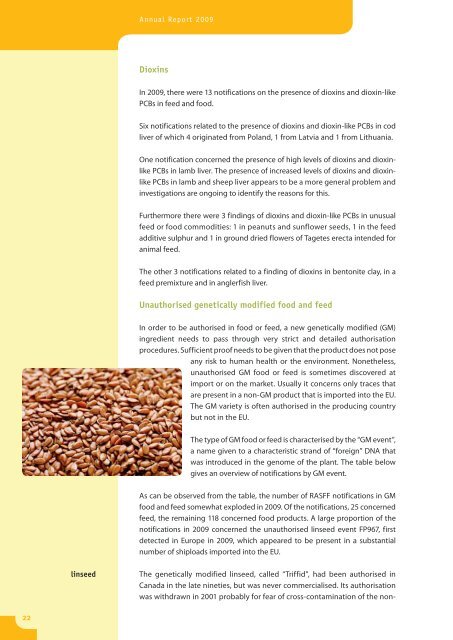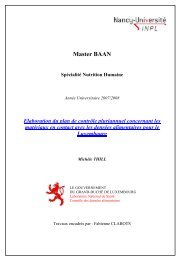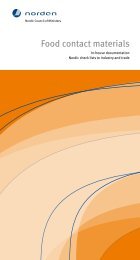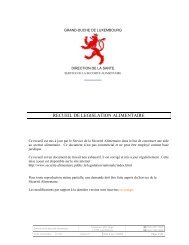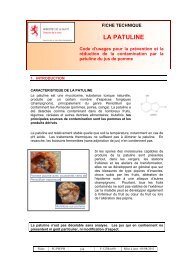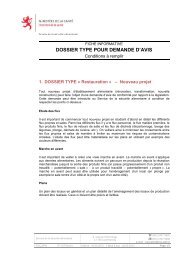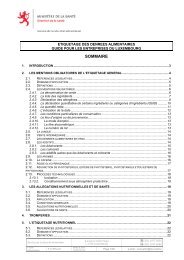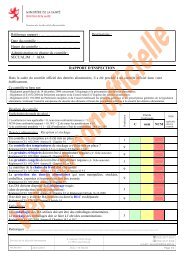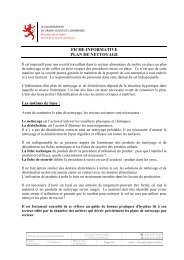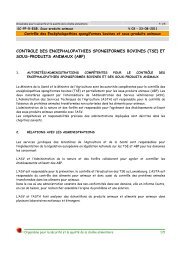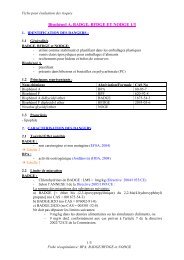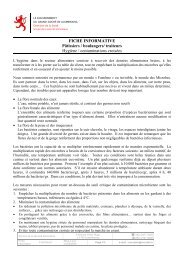(RASFF) Annual Report 2009 - European Commission - Europa
(RASFF) Annual Report 2009 - European Commission - Europa
(RASFF) Annual Report 2009 - European Commission - Europa
Create successful ePaper yourself
Turn your PDF publications into a flip-book with our unique Google optimized e-Paper software.
<strong>Annual</strong> <strong>Report</strong> <strong>2009</strong><br />
Dioxins<br />
In <strong>2009</strong>, there were 13 notifications on the presence of dioxins and dioxin-like<br />
PCBs in feed and food.<br />
Six notifications related to the presence of dioxins and dioxin-like PCBs in cod<br />
liver of which 4 originated from Poland, 1 from Latvia and 1 from Lithuania.<br />
One notification concerned the presence of high levels of dioxins and dioxinlike<br />
PCBs in lamb liver. The presence of increased levels of dioxins and dioxinlike<br />
PCBs in lamb and sheep liver appears to be a more general problem and<br />
investigations are ongoing to identify the reasons for this.<br />
Furthermore there were 3 findings of dioxins and dioxin-like PCBs in unusual<br />
feed or food commodities: 1 in peanuts and sunflower seeds, 1 in the feed<br />
additive sulphur and 1 in ground dried flowers of Tagetes erecta intended for<br />
animal feed.<br />
The other 3 notifications related to a finding of dioxins in bentonite clay, in a<br />
feed premixture and in anglerfish liver.<br />
Unauthorised genetically modified food and feed<br />
In order to be authorised in food or feed, a new genetically modified (GM)<br />
ingredient needs to pass through very strict and detailed authorisation<br />
procedures. Sufficient proof needs to be given that the product does not pose<br />
any risk to human health or the environment. Nonetheless,<br />
unauthorised GM food or feed is sometimes discovered at<br />
import or on the market. Usually it concerns only traces that<br />
are present in a non-GM product that is imported into the EU.<br />
The GM variety is often authorised in the producing country<br />
but not in the EU.<br />
The type of GM food or feed is characterised by the “GM event”,<br />
a name given to a characteristic strand of “foreign” DNA that<br />
was introduced in the genome of the plant. The table below<br />
gives an overview of notifications by GM event.<br />
As can be observed from the table, the number of <strong>RASFF</strong> notifications in GM<br />
food and feed somewhat exploded in <strong>2009</strong>. Of the notifications, 25 concerned<br />
feed, the remaining 118 concerned food products. A large proportion of the<br />
notifications in <strong>2009</strong> concerned the unauthorised linseed event FP967, first<br />
detected in Europe in <strong>2009</strong>, which appeared to be present in a substantial<br />
number of shiploads imported into the EU.<br />
The genetically modified linseed, called “Triffid”, had been authorised in<br />
Canada in the late nineties, but was never commercialised. Its authorisation<br />
was withdrawn in 2001 probably for fear of cross-contamination of the nonlinseed<br />
22


